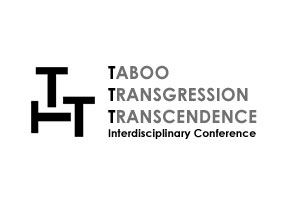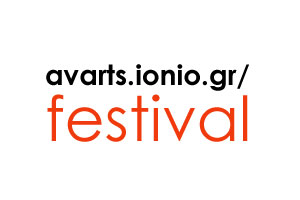Summary:This research is a bibliographical study exploring the lives of four women connected through art. The motivation behind this research stems from the need to highlight the work of female artists who lived and created in a predominantly male-dominated environment—one that was often hostile and exclusionary. Rather than claiming pure originality, this study is driven by a personal need to promote women’s art and to delve into the personalities of these artists—four women long overlooked by history. Until recently, some of them were mere footnotes in the narratives of their male counterparts. However, in recent years, film, contemporary research, museum exhibitions, and academic studies have begun to reclaim their legacies, transforming them into symbols of artistic achievement and female resilience. This research examines the lives of four artists—Artemisia Gentileschi, Thalia Flora-Karavia, Camille Claudel, and Frida Kahlo—seeking to connect them first as women, and then as artists.
Key words: Art, woman
Objective: The aim of this research is to explore the common threads in the artistic work and, more importantly, in the lives of these four artists, who fought against adversity and dedicated their lives to art.
Method: This study is a bibliographical exploration of the lives of four visual artists—four women who, despite struggles and adversity, pursued what they loved: creating art, expressing themselves, learning, and living through their work. Most of them remain largely unknown to the general public even today, while others have gained recognition primarily through commercial exposure. Yet, even after major film productions attempted to depict their lives, their true stories remain unfamiliar to many. These artists were selected for two main reasons: a) because they endured significant personal tragedies (such as war, sexual violence, accidents, and mental health issues) that profoundly influenced their artistic production, and b) because, after a prolonged period of neglect, their work has recently gained renewed attention through auctions, major retrospective exhibitions, films, and scholarly research. This research begins with Artemisia Gentileschi (1593–1653), an Italian Baroque painter who was sexually assaulted by her father’s colleague and fellow artist (Christou, 1992). It then moves to Thalia Flora-Karavia (1871–1960), a Greek painter from Siatista who sought to study in Munich, at a time when women were not admitted to fine arts academies (Slavou-Mavroidis, 1974). Next is Camille Claudel (1864–1943), who had a passionate yet tumultuous relationship with her mentor, Auguste Rodin—a connection that fueled their artistic work but may also have contributed to her mental deterioration (Honor & Fleming, 1988). Finally, the study examines Frida Kahlo (1907–1954), who expressed her physical pain—primarily through self-portraits—and whose name became inseparable from that of Diego Rivera, as art and politics were central to both their lives and the foundation of their so-called “harmonious” marriage (Kattenmann, 2003).
Conclusion:
In recent years, there has been a growing effort to promote women’s art, yet progress remains slow in a predominantly male-dominated field. This movement defends both the existential and political dimensions of art, navigating a dual framework: On the one hand, feminist discourse often prioritizes pressing social issues over artistic practices, leaving little room for reflection on how art history shapes identity. On the other hand, mainstream, male-centered art history continues to overlook feminist art debates, downplaying their significance by categorizing them as mere “women’s art” or referencing “women in art” only as an afterthought. Rather than acknowledging them as a force that challenges and deconstructs fundamental artistic narratives, they are often relegated to the margins of historical discourse (Goutierrez, 2015). From research conducted since the 20th century, it has been observed that art history has ignored many women artists and, at best, downplayed their contributions (Katsaouni, 2014). Since 1974, feminism began to establish itself in the field of art history — a field that is part of cultural hegemony and contributes to the maintenance and reproduction of power relations in the art world (Mitropoulou, 2019). The feminist art movement emerged with the aim of introducing new policies and highlighting new conditions — sometimes supportive but more often strongly opposed to established norms. To achieve its goals, it engaged in interventions with strong political content, challenging in its own way the dominance of the Western cultural model, while also pursuing continuous aesthetic, social, and political experimentation (Kapetanou, 2021). The close association of feminist artists with the movement’s core principles contributed to the formation of a communal identity among them, expressed through thematically and stylistically diverse works that served as reference points for the expression of otherness (Kapetanou, 2021).
Goutierrez, M. L. (2015). Entre las intervenciones feministas y el arte de mujeres. Aportes, rupturas y derivas contemporáneas de los cruces entre arte y feminismos. Asparkía, 27, 65-78.
Christou, C. (1992). European Painting of the 17th Century. Vanias.
Honour, H., & Fleming, J. (1998). History of Art. (Α. Pappas, Trans.). Ypodimi.
Kapetanou, A. (2021). Society, law and art: The legal and sociological dimensions of the feminist movement in the arts. Aristotle University of Thessaloniki.
Kattenmann, A. (2003). Rivera (Α. Pappas, Ed.; Μ. Mpasta, Trans.). Tascen.
Katsaouni, E. (2014). The artistic activity of Greek women and its
promotion in feminist magazines of the 19th century and the 20th century. Aristotle University of Thessaloniki.
Mitropoulou, E. (2019). The female gender and its relation to art in Greece during the second half of the 20th century (1945–2000). Hellenic Open University.
Sklabou-Mavroidi, Μ. (1974). One of the first messages of Impressionism in Greece. In Greek. In Painters from the 19th to the 20th (Vol. 1, pp. 412–425). Melissa.
Maria Papadopoulou is a multifaceted visual artist whose creative pursuits span painting, printmaking, sculpture, installations, and video art. She graduated from the School of Fine Arts at Aristotle University of Thessaloniki (AUTh), specializing in painting, and continued her studies in Art and New Technologies at the Ionian University. Her academic journey culminated with a PhD from the Film Department of AUTh. Her diverse body of work has been recognized with awards in various fields, including her contributions to cinema, painting, and writing. Maria has showcased her art in over 140 group exhibitions in Greece and abroad, while also holding six solo exhibitions and participating in prominent international film festivals. In addition to her artistic endeavors, she works as a collaborate staff in the Hellenic Open University (Ε.Α.P.). Also she works in Private institution E.S.P. and in secondary education, blending teaching with art and research.
Back





